The 2024-25 NHL regular season will end Thursday, with exciting races for playoff seeding and the draft lottery order right until the final horn.
But not every team gets to participate in the postseason. This is the place where we look ahead to the offseason for all the teams eliminated from contention: Who will those teams try to add via free agency, trades and the draft? How much better will the team be in 2025-26?
Read on for a look at what went wrong for each eliminated team, along with a breakdown of the biggest keys this offseason and realistic expectations for next season. Note that more teams will be added to this story as they are eliminated.
Note: Profiles for the Atlantic and Metro teams were written by Kristen Shilton, and Ryan S. Clark analyzed the Central and Pacific teams. Stats are collected from sites such as Natural Stat Trick, Hockey Reference and Evolving Hockey. Projected cap space per PuckPedia. Dates listed with each team are when the entry was published. Teams are listed alphabetically by publication date.
Jump to a team:
ANA | BOS | BUF | CHI
DET | NSH | NYI | NYR
PHI | PIT | SJ | SEA
UTA | VAN

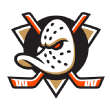
Projected cap space: $39.55 million
2025 draft picks: 1st, 2nd (WPG), 3rd, 3rd (TOR), 4th (DET), 5th, 5th (EDM), 6th, 7th
What went right? The team’s young core made progress. Unlike his rookie season, Leo Carlsson wasn’t limited to a certain number of games, and the result was a 20-goal season. Goaltender Lukas Dostal won 20 games, and was in the top 20 in save percentage. Cutter Gauthier flirted with a 20-goal season as a rookie. Jackson LaCombe went from 17 points in 71 games in 2023-24 to having 14 goals and 43 points in 70 games, averaging an additional three minutes of ice time. Mason McTavish had his first 20-goal and 50-point season.
Those players are all key building blocks, and all played a role in the Ducks finishing with more than 70 points after consecutive, sub-60-point seasons.
What went wrong? The defensive infrastructure around Dostal. After finishing the 2023-24 season with a minus-91 goal differential, the Ducks needed to be better in the defensive zone in 2024-25. This season, they did cut the differential to minus-34, which speaks to some progress. But their underlying metrics prove there’s still more work to be done. Natural Stat Trick’s data shows that the Ducks gave up the NHL’s most shots per 60 minutes, the most scoring chances per 60 and the most high-danger chances per 60.
Keys to the offseason: Again, it goes back to the young core. Dostal is a pending restricted free agent and is expected to receive a significant increase from his $812,500 salary. McTavish timed his first 20-goal season well; his entry-level contract ends, meaning he’ll also need to sign a new deal this offseason. Securing those contracts should still give the Ducks quite a bit of cap space as they seek to add more help around their core for the next phase.
Realistic expectations for 2025-26: In a way, they appear to be on the same path the Utah Hockey Club took in 2024-25. Although the playoffs might not be in reach next season, the Ducks were nearly at a point-per-game pace. Another year of experience for their core — coupled with what they could do in free agency — could have them contending for a wild-card spot until next season’s final weeks.

Projected cap space: $27.14 million
2025 draft picks: 1st, 2nd (CAR), 2nd (STL), 3rd, 4th (PHI), 5th, 6th, 7th
What went right? The best thing Boston did this season was lean all the way into a rebuild. It was inevitable that after a decade of perennial playoff contention the Bruins were going to take a step back — and take stock. GM Don Sweeney’s early coaching change — from Jim Montgomery to Joe Sacco — didn’t give Boston a boost, and by trade deadline it was smart for Sweeney to be a big-time seller. The Bruins acquired valuable draft capital — including four picks in the first and second rounds — and they added some intriguing new faces such as Casey Mittelstadt and Fraser Minten. Some burgeoning late-season chemistry between David Pastrnak and Morgan Geekie is a nice bonus for the Bruins as a potential pairing to watch.
What went wrong? Boston lost seven of its first 11 games. That was hardly a good omen for what was ahead. The Bruins’ calling card has long been its defensive play, so losing top defenseman Hampus Lindholm to a season-ending patella fracture in mid-November was crushing. Montgomery was fired the same week. Jeremy Swayman — following a contentious contract dispute — was mediocre in net. And there was little help from the Bruins’ offense in making up for any of their defensive and goaltending issues. Boston is 29th in scoring, averaging just 2.63 goals per game, and on the power play (15.5%).
Charlie McAvoy’s upper-body injury in early February at the 4 Nations Face-Off was another gut punch. It’s no wonder Sweeney keyed on major changes — such as moving on from captain Brad Marchand — considering how much these Bruins pale in comparison to what previous teams produced.
Keys to the offseason: The Bruins need a permanent head coach. Sweeney could opt to remove Sacco’s interim tag or explore who else is available. Once Sweeney has that person in place, they can start preparing for an important upcoming draft in which Boston will have a high first-round selection and two picks in the second round. Those picks take on a greater meaning now considering the Bruins don’t have a deep prospect pool. The focus then shifts to determining which of Boston’s young players will be ready to take a leap in the NHL, and how the Bruins’ will prioritize adding veteran players around them in free agency. The rebuild will be in full swing.
Realistic expectations for 2025-26: Boston still has a 40-goal scorer in Pastrnak. If Lindholm and McAvoy return to full health, and Swayman can be a game-changer in net again, there’s hope for the Bruins to be a fun club to watch — if not one that reaches the playoffs after a one-year absence. It’s not as if they’re starting from scratch.

Projected cap space: $22.32 million
2025 draft picks: 1st, 2nd, 3rd, 4th, 4th (MIN), 5th, 6th, 7th, 7th (NSH), 7th (WSH)
What went right? Buffalo proved this season it is capable of being a playoff team. The Sabres overcame a slow start to hold a postseason slot at Thanksgiving, which is often a good indicator of a club’s potential to stay there through the season. Tage Thompson had a terrific season, scoring 44 goals and averaging a point per game; when the Sabres do finally break through, they’ll have him in large part to thank for keeping their offensive engine going. Rasmus Dahlin also continues to be a standout with 62 points from the back end.
GM Kevyn Adams was able to trade underperforming Dylan Cozens and added Josh Norris (injured for most of his Sabres’ tenure to date) for the future.
What went wrong? The Sabres have failed to qualify for the playoffs in 14 straight seasons. That’s tied with the New York Jets for the longest active drought in major professional sports. But Buffalo had its chance. The Sabres were in the mix until a 13-game winless streak through December torpedoed things. And Adams didn’t do anything at the trade deadline to make Buffalo better despite its many flaws. The Sabres’ collective goaltending was awful, with the league’s second-worst save percentage. Buffalo gives up the fourth-most goals per game (3.47) and that’s all the more disappointing considering the Sabres are seventh in scoring (3.27).
The Sabres can be their own worst enemy. Ditto with how Buffalo started strong — with the third-most first period goals — only to offer up the fourth most in the third period. The Sabres’ attention to detail wasn’t where it needed to be, and expected growth from players such as Jack Quinn and Zach Benson didn’t materialize.
Keys to the offseason: This was Adams’ fifth season in Buffalo — all, obviously, without a playoff appearance. Will ownership keep him on for another kick at that can? It was Adams who installed Lindy Ruff as coach (again) last season, and that alone might keep Adams around. The Sabres have several personnel decisions to make from there. Quinn, JJ Peterka, Bowen Byram, Devon Levi and Ryan McLeod are all restricted free agents. Who will Buffalo retain — and who winds up without a qualifying offer?
Then it’s on to additions from the outside. The Sabres need stronger goaltending next season, and if Ukko-Pekka Luukkonen and Levi can’t provide it as a tandem, then Adams must explore the market for a veteran who can either support one of them or take the reins as a No. 1. That would go a long way in supporting Buffalo toward consistently being the team it has been of late, winning 10 of 13 through March into April — when, unfortunately, it was all too little, too late.
Realistic expectations for 2025-26: Dare we say it? Playoffs. That’s where Buffalo absolutely must get. And they have the talent to do it. It’s on management to fill in the gaps and get the Sabres out of their historic skid.

Projected cap space: $29.17 million
2025 draft picks: 1st, 1st (TOR), 2nd, 2nd (DAL), 3rd, 4th, 4th (NYR), 6th, 7th
What went right? The Seth Jones trade. After Jones told Blackhawks management that he wanted to be moved to a contender, how would they strike a deal for a player with three more years on his contract worth $9.5 million annually?
Blackhawks GM Kyle Davidson found a suitor in the Panthers, and received a 2026 first-round pick and goalie Spencer Knight, while retaining $2.5 million of Jones’ salary each of the remaining seasons. The trade got the Blackhawks their goalie of the present and future in Knight, and provided them with another first-round pick for 2026, extending a streak of multiple first-round picks dating to 2022.
What went wrong? There was only nominal improvement after one of the more aggressive free agency windows of any team last offseason. They had 22 wins through 78 games, and though they trimmed their goal differential from minus-111 in 2023-24 to minus-74, it was still a season of frustration that peaked with the firing of coach Luke Richardson after 26 games, replacing him with interim coach Anders Sorensen.
Keys to the offseason: Does Sorensen get the full-time coaching job, or do the Blackhawks go in another direction? There’s also a discussion about what to do with Ryan Donato, who led the team in goals this season. Donato is a pending unrestricted free agent, who is having the best season of his career. The Blackhawks obviously have the cap space, but might it be better spent elsewhere?
Once they have agreed upon new deals for their four-player restricted free agent class that includes Philipp Kurashev and Arvid Soderblom, the Blackhawks could use the remaining money while having one eye on what lies ahead after the 2025-26 season.
Realistic expectations for 2025-26: Next season will be a crucial one, mainly because another season without significant progress could prompt the front office to face bigger questions; after all, the Blackhawks are looking to reach the 70-point plateau for the first time since 2019-20.
So, what does the future look like? Connor Bedard, Frank Nazar and Knight, who are all central to their future plans, are going to be entering the final years of their respective deals. Bedard and Nazar are coming off their entry-level contracts, and Knight would be seeking his third deal — but his first as a No. 1 goalie.

Projected cap space: $22.98 million
2025 draft picks: 1st, 2nd, 3rd, 3rd (NYR), 4th (TB), 5th, 6th, 7th, 7th (STL)
What went right? Detroit showed its tenacity and resilience multiple times this season. The Red Wings overcame a slow start by leaning into a coaching change — from Derek Lalonde to Todd McLellan — that ignited the team’s December surge into a playoff spot. Detroit fell in and out of contention until February and looked ready to go on a run. Leading that charge was captain Dylan Larkin — with 29 goals this season — and Lucas Raymond, who leads Detroit in points with 75. Raymond’s development has been especially positive for Detroit and signals how he can continue carrying their offense into the future. The Red Wings also must feel good about being buoyed by a fourth-ranked power play (27.6%).
What went wrong? The Red Wings’ defensive play has been a hindrance for years. This season was no exception. Detroit gave up the 12th-most goals against per game (3.14), while ranking 23rd in scoring (2.81). That’s a tough combination to overcome. The Red Wings’ putrid penalty kill was also worst in the league (69.6%), another indication of their defensive deficiencies.
GM Steve Yzerman didn’t do much at the trade deadline to address any of the Red Wings’ problems, and Yzerman’s continued failure to add impact players in free agency is showing in how Detroit continues to stop short of reaching the playoffs. The Red Wings need consistency, and a strong defensive structure players buy into and can execute. There wasn’t enough of it this season to get Detroit out of its nine-year playoff drought.
Keys to the offseason: Yzerman isn’t one for making wild moves. But even he must be open to trying something new. There are internal choices to make, including on key RFAs Albert Johansson and Elmer Soderblom, and veterans Patrick Kane and Alex Lyon are both pending UFAs. How drastic Yzerman gets in terms of personnel turnover could foretell where Detroit goes from here.
The Red Wings need more scoring and have been top-heavy in that respect, relying on Larkin, Raymond and Alex DeBrincat for a large chunk of their output. Improving depth there, with proven defense-minded talent, will help the Red Wings keep up with their Atlantic rivals. Generally boosting the blue line wouldn’t hurt, either.
Realistic expectations for 2025-26: Detroit has playoff potential. They’ve shown it repeatedly. The Red Wings’ goal going into next season should be as contenders for the postseason. The question is whether Yzerman provides Detroit with more resources to get there.
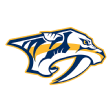
Projected cap space: $17.26 million
2025 draft picks: 1st, 1st (TB), 1st (VGK), 2nd, 2nd (TB), 3rd, 4th, 5th, 6th, 6th (COL)
What went right? Their prospects. Of note, Matthew Wood averaged more than a point per game at the University of Minnesota before signing a professional contract. Joey Willis went from scoring 29 goals in his first two OHL seasons combined to having 27 goals this season. At the NHL level, Justin Barron, Zachary L’Heureux and Fedor Svechkov had expanded ice time.
What went wrong? Everything else. They went from being a playoff team that spent big in free agency to get Steven Stamkos, Jonathan Marchessault, Brady Skjei and Luke Schenn to having the third-worst record in the NHL. They were consistently disconnected. They are sixth in shots per game, but last in goals per game. They have one of the top 10 penalty kills yet gave up the seventh-most goals per game.
Keys to the offseason: With three first-round picks and more than $17 million in cap space, the Preds have options — especially if their first-round pick becomes the No. 1 pick via the draft lottery. But the Predators are trying to find a way that allows them to win now and in the future. It’s why they began shifting course toward playing young players after a poor start to the season. Now it’s all about strengthening that plan as they seek to recover from one of the more trying seasons in franchise history.
Realistic expectations for 2025-26: The Preds can go in a number of directions. They entered the 2023-24 season as a team on the rise and made the playoffs. They entered 2024-25 as a team that could be in the conference finals discussion before ending up in the lottery. If they aren’t in the playoff mix next spring, there will be some big questions for the front office to answer.
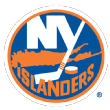
Projected cap space: $28.90 million
2025 draft picks: 1st, 2nd, 3rd, 4th, 5th, 6th, 7th
What went right? The Islanders showed determination by putting themselves into a contending position this season, particularly during an 11-3-0 run through January ahead of the 4 Nations Face-Off break. They benefited from some terrific individual performances along the way, most notably from Bo Horvat (with a team-leading 54 points) and Anders Lee (pacing New York with 28 goals).
Noah Dobson continued to show why he’s one of the league’s burgeoning stars on the back end and Alexander Romanov appears increasingly comfortable in his role. GM Lou Lamoriello also deserves credit for the tidy trade of Brock Nelson, which primarily netted New York (among other things) a first-round pick in 2026 NHL draft and promising prospect in Calum Ritchie.
What went wrong? The Islanders failed to truly excel in any category. They’re 25th in the scoring (averaging 2.77 goals per game) and gave up the 13th-most goals against (3.14), with a putrid, 31st-ranked power play (13.1%) and equally awful penalty kill (72.0%). Losing Mathew Barzal to injury for all but 30 games this season certainly took its toll in basically every respect. Starting goaltender Ilya Sorokin has been fine (with a .905 save percentage) but hardly the spectacular figure he was in helping New York reach the playoffs in recent seasons.
The Islanders didn’t have enough difference-makers, and Lamoriello did not bring anyone on board before the trade deadline. In fact, Lamoriello held onto guys such as Jean-Gabriel Pageau and Kyle Palmieri — a pending UFA — and seemingly missed out on a chance to add draft assets for a much-needed overhaul. By the time head coach Patrick Roy was publicly calling out forward Anthony Duclair and subsequently seeing Duclair take a leave of absence from the team, it was clear how tensions were boiling over.
Keys to the offseason: New York must at least consider taking a big swing. But is Lamoriello going to do that? The Islanders should have about $28 million in cap space to use for next season, and they’ve got a couple of high draft picks. It’s time to decide though what direction the franchise is headed. Can Lamoriello steer this group back to contending status? Or is a rebuild on deck?
There are also critical personnel decisions to make. The Islanders have a large collection of pending RFAs, including Dobson, Romanov, Scott Perunovich, and Adam Boqvist. Who New York keeps will have a major impact on their blue line. The Islanders again need to address their scoring depth. Barzal’s absence absolutely hurt New York. Shoring up the offense so it can withstand injury will go a long way. But step one is getting honest about where the organization is right now, and whether they keep pushing to compete in the Metro or take a step back and retool.
Realistic expectations for 2025-26: The Islanders sputtered this season after making consecutive playoff appearances — both with first-round exits. Unless there’s some significant changes in the offseason, one-and-done in the postseason is about as good as New York can expect.
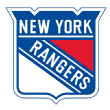
Projected cap space: $9.67 million
2025 draft picks: 2nd, 3rd (SEA), 4th (ANA), 4th (COL), 5th (MIN), 6th, 6th (SEA), 7th
What went right? New York didn’t need any added distractions this season, so the fact GM Chris Drury was able to offload underperforming former captain Jacob Trouba early was a shrewd move and kept the Rangers from dwelling on that particular problem all season. The Kaapo Kakko trade was a necessary swap as well that was swiftly handled. And bringing on J.T. Miller was, at least, an attempt to give New York a needed boost up front.
Meanwhile, New York saw growth from some of its young players, especially Will Cuylle (with a career-high 20 goals and 43 points this season). Artemi Panarin has done his part to lead the Rangers on offense (37 goals and 87 points) and Adam Fox anchored the blue line with trademark efficiency.
What went wrong? Oh boy. Are the Rangers this season’s biggest disappointment? It’s hard to argue otherwise. Last season’s Presidents’ Trophy winners are a shadow of their former (114-point) selves. All the previous characteristics New York displayed as regular-season champions evaporated. The Rangers lacked consistency (they haven’t won three games in a row since November), veteran contributions (Mika Zibanejad and Chris Kreider have been particularly lackluster), a functional power play (ranked 27th at 17.6%) and failed time and again to show any sort of resiliency (they have won five games all season when trailing by one in the third period).
The lack of urgency and determination that elevated New York teams of the past has been missing. But why? Was it the rumored locker room issues? Has coach Peter Laviolette’s message been falling on deaf ears? Whatever the reason, New York never truly put its game together. To be officially eliminated from the postseason in a dispiriting 7-3 loss to Carolina on Saturday was a fitting salvo in a lost season.
Keys to the offseason: Can Laviolette survive to coach another season? That’s question No. 1 — and a bafflingly one to even be considering given he led the Rangers to their best regular season the season before. But it seems inevitable New York is going to make drastic changes after this clunker of a season.
Next, Drury must assess this Rangers’ core and figure out who to build around, and who to move out. The way Kreider and Zibanejad have struggled could lead Drury to find them new homes. And New York’s blue line is probably in need of a redo given the Rangers gave up the 14th-most goals against (3.10) and that’s with one of the league’s better goalie tandems in Igor Shesterkin and Jonathan Quick. It’s not as if New York has to tear it all down. Drury must identify where the biggest leaks this season came from and do what’s necessary to patch the holes.
Realistic expectations for 2025-26: New York can easily be a playoff team again next season. But it will require some form of change. To stand pat would send the wrong message about how poorly the Rangers performed this season. A chip on the shoulder will help New York get back to its potential.

Projected cap space: $25.64 million
2025 draft picks: 1st, 1st (COL), 1st (EDM), 2nd, 2nd (ANA), 2nd (CGY), 2nd (CBJ), 3rd, 5th, 5th (CAR), 6th
What went right? Philadelphia had its moments. The arrival of Matvei Michkov signaled the start of a new era for the Flyers in which Michkov — a 20-year-old dynamo leading all NHL rookies with 24 goals — has seemingly unlimited potential to drive their offense into the future. And Philadelphia has other young players — such as last year’s No. 13 pick Jett Luchanko — to be excited about too after his brief NHL audition.
The Flyers’ old guard wasn’t all bad, either. Travis Konecny had another strong season with a career high in points ahead of his long-term extension starting next season. Ultimately, Philadelphia can’t stay in a rebuild mode forever and it was positive to see GM Danny Briere actually make some moves — such as trading Joel Farabee and Scott Laughton and firing coach John Tortorella — to help kick-start Philadelphia into 2025-26.
What went wrong? The Flyers were too big a mess in too many key categories. Philadelphia’s collection of goaltenders produced a woeful .888 save percentage at even strength, the worst recorded by a team since 2009-10. Samuel Ersson wasn’t the reliable No. 1 the Flyers needed, and it showed too often in how games slipped away. Philadelphia’s putrid power play was another problem — 30th in the league (14.9%) — and a 24th-ranked offense hasn’t been much help. By the time Philadelphia had lost 11 of 12 through mid-March, it was no surprise Tortorella was gone. Something is clearly still missing in Philadelphia.
Keys to the offseason: First, Philadelphia needs a head coach. Briere will decide quickly whether that’s via removing the interim tag from Brad Shaw or a new addition. There’s much work to be done with the next permanent bench boss in place.
Philadelphia absolutely must capitalize in the draft. They hold three first-round picks and four second-round choices. There’s a chance if the Flyers draft high enough that one of those first-rounders steps into their lineup at some point next season. Briere must be smart in how he cashes in on that capital. Then it’s all about development. Philadelphia doesn’t project to be overly active in free agency given the amount of talent it already has in the NHL and waiting in the wings. What the Flyers need are for those players to take steps forward so when training camp comes around there is serious competition for spots, and it sets up Philadelphia for a competitive season.
Realistic expectations for 2025-26: This is the fifth consecutive season Philadelphia has missed the postseason. The Flyers must at least challenge well into April for a spot next season. Briere has been patient with this group continuing to grow and it’s about time those investments paid dividends.
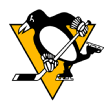
Projected cap space: $24.58 million
2025 draft picks: 1st, 1st (NYR), 2nd (WSH), 3rd, 3rd (MIN), 3rd (OTT), 4th, 5th (CHI), 5th (NYR), 6th, 7th
What went right? Pittsburgh can always count on Sidney Crosby to breathe some sort of life into their season, and the captain delivered again with a 30-goal campaign that suggests the 37-year-old isn’t slowing down. And that’s a great thing — because the Penguins’ recent youth movement might signal brighter days ahead. GM Kyle Dubas brought up Rutger McGroarty — acquired via trade earlier this season — and Ville Koivunen to get Pittsburgh’s next wave ready with some NHL experience. Smart decision. The Penguins needed to end the season on a high note, and showcasing what the franchise has coming seemed invigorating for old and new skaters alike.
What went wrong? It was death by a thousand cuts in Pittsburgh. The Penguins don’t have the depth to compete with other Eastern Conference powerhouses — outside of their top line (with Crosby, Rickard Rakell and Bryan Rust mostly), there wasn’t enough consistent scoring. Even Evgeni Malkin struggled with only 15 goals this season.
That dearth of scoring issue was amplified by the Penguins’ problems keeping pucks out of their net. Tristan Jarry flamed out as the team’s expected No. 1 goaltender, being demoted to the AHL along with his 3.31 goals-against average and .884 save percentage through mid-January. To be fair, Jarry (and the Penguins other netminders) got no help from a leaky blue line that surrounded the second-most goals per game (3.58) this season. It would have challenged Pittsburgh to overcome its issues in only one phase of the game, let alone all three.
Keys to the offseason: Pittsburgh doesn’t appear close to firing coach Mike Sullivan, so that allows the Penguins to hit the ground running again in figuring out how to capitalize on its youth movement. McGroarty and Koivunen will be counted on to compete for slots in training camp.
Then it’s on Dubas to address the Penguins’ lack of scoring with some strategic veteran additions. The market should play out in Pittsburgh’s favor there — and offering the incentive of potentially skating alongside Crosby never hurts in a negotiation. And the Penguins’ defense? It can’t stand as is. If Dubas is still trying to avoid a full-scale rebuild, then it’s crucial to use this offseason to find roster balance between the Penguins’ present and future additions. Some degree of outside help is required to make that happen.
Realistic expectations for 2025-26: It’s not reasonable to say Pittsburgh makes it back to the playoffs — unless there are some key changes. If the Penguins rightly address their leaks, then there’s talent enough to put Pittsburgh back as a playoff contender. But that’s a mighty large question as this season comes to a close.
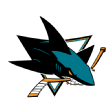
Projected cap space: $42.19 million
2025 draft picks: 1st, 1st (DAL), 2nd, 2nd (OTT), 3rd (COL), 4th (STL), 4th (WPG), 5th (COL), 7th (NJ)
What went right? The blueprint for the future. Star rookie center Macklin Celebrini leads the team in points, and fellow star rookie forward Will Smith is fifth. They used the trade deadline to add a pair of first-round picks; they’ll have two first-rounders in 2025 and again in 2026, continuing a trend since 2023. Even though they’re going to finish with the NHL’s worst record for a consecutive season, the Sharks have already shown some sense of improvement given they went from a minus-150 goal difference to minus-98 entering the final week of the regular season.
What went wrong? Well, there was quite a bit. But that’s to be expected whenever a team is in the midst of a rebuild.
The Sharks were in the bottom 10 in goals per game, the power play, scoring chances per 60 minutes, shots per 60 and high-danger chances per 60, which explains their offensive struggles. On defense, they gave up the most goals per game, had the worst penalty kill, and were in the bottom 10 in most scoring chances allowed per 60, most shots allowed per 60 and most high-danger chances allowed per 60.
Keys to the offseason: Do they get the No. 1 pick for a consecutive year? Or will it be No. 2 or No. 3? Whatever happens, this will be the third straight draft cycle and the fourth time in the past five in which the Sharks have a lottery pick. Picking that high along with having a second first-round pick will certainly advance their rebuild.
Then there’s the fact they’ll have more than $42 million in cap space, which can be used to address their roster — with the caveat that the Sharks might not be major players in free agency for at least a few more years.
Realistic expectations for 2025-26: Continuing to watch the progress made by Yaroslav Askarov, William Eklund, Celebrini and Smith, among others, is going to be the priority. The Sharks will seek to make more improvements while further developing those franchise cornerstones in Ryan Warsofsky’s second year behind the bench. But there’s also a possibility the Sharks could either sign players in free agency or move on from players on their current roster ahead of the deadline to add even more draft capital for their future plans.

Projected cap space: $21.75 million
2025 draft picks: 1st, 2nd, 2nd (TOR), 4th, 4th (DAL), 5th, 7th
What went right? All three of the trades they made this season. Moving on from Will Borgen led to them getting a one-time No. 2 overall pick in Kaapo Kakko, plus draft capital. At the trade deadline, they acquired a pair of first-round picks in 2026 and 2027 in exchange for Oliver Bjorkstrand and Yanni Gourde. Parting ways with Brandon Tanev netted them a second-round pick in the 2027 draft. Kakko has 10 goals and 29 points in 46 games for the Kraken as part of a season in which he set a career high with 43 points.
What went wrong? Between their underlying defensive metrics and the fact they sent Philipp Grubauer to the AHL? It wasn’t the most consistent season for the Kraken when it came to goal prevention. Having a new coaching staff included the departure of assistant coach Jay Leach, who played a crucial role in the Kraken’s defensive identity. This season, they were in the bottom 10 in shots allowed per 60 minutes, scoring chances allowed per 60 and high-danger chances allowed per 60. The underperformance from Grubauer didn’t help, and in fact, Joey Daccord (who began as the backup) was one of their more consistent performers.
Keys to the offseason: Dan Bylsma’s coaching staff helped pull the Kraken from the bottom five in goals per game in 2023-24 to being around league average this season. Could they find a defensive version of that solution heading into 2025-26, with the idea that it might provide the Kraken with the consistency that has eluded them as a franchise? That is one of the most significant questions facing the Kraken now that they have missed the playoffs in three of their first four seasons.
Realistic expectations for 2025-26: The Kraken must be in contention for a wild-card spot (at minimum), or there will be some big questions to answer for the front office at this time next year.

Projected cap space: $21.53 million
2025 draft picks: 1st, 2nd, 3rd, 4th, 5th, 6th
What went right? Quite a bit. The trade during draft weekend for franchise defenseman Mikhail Sergachev set the stage for a season in which the franchise made real strides. Before moving to Salt Lake City, the Arizona Coyotes had one 80-point season since 2014-15. The Utah Hockey Club had 84 points with four games left. The team was still fighting for a playoff berth entering the final two weeks of the regular season, which was another step forward for the core — and proves that bigger things could be on the horizon.
What went wrong? Overtime and shootouts. Entering the final two weeks of the regular season, only the Flames and Canucks had more overtime losses than Utah, two teams that were also chasing a Western Conference wild-card spot. But losing those 12 games in overtime or a shootout demonstrates how Utah was close in many games. If it can get on the winning end of those extra-time coin flips next season, the results will be different too.
Keys to the offseason: Remember how the Coyotes were hamstrung by a need to be miserly with cap space? The Utah Hockey Club doesn’t have that issue. That much was made clear last offseason when GM Bill Armstrong invested $22 million for each of the next two seasons in bolstering the defensive unit. Utah will have more than $21 million in space this summer, which is enough to improve a roster that could seriously challenge for a playoff spot. A top priority? Improving an offense that was 21st in goals per game, with a power play that was 15th.
Realistic expectations for 2025-26: Making the playoffs. It’s really that simple. Utah has a core that has gone through its growing pains. It’s a group that has shown it can make progress from one year to the next. Nearly the entire roster is either under contract or team control for next season, and the front office has enough cap space to add the sort of players who could help clinch a playoff berth in the club’s second season in Salt Lake.
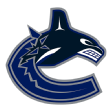
Projected cap space: $15.08 million
2025 draft picks: 1st, 2nd, 3rd (SJ), 4th (OTT), 5th, 6th, 7th
What went right? Despite all the inconsistencies, the numerous injuries to key players, and the J.T. Miller-Elias Pettersson friction, the Canucks were still in the hunt for a wild-card berth entering the final two weeks of the regular season. Yes, there were those who had strong individual seasons, including reigning Norris Trophy winner Quinn Hughes and Pius Suter, who had his first 20-goal effort and more than 40 points. But those performances could only get the Canucks so far, in a season in which they will miss the playoffs after winning their division and coming within a game of the conference finals a year earlier.
What went wrong? All those inconsistencies, those numerous injuries and the Miller-Pettersson friction.
One detail that speaks to those inconsistencies is that the Canucks were among the top five in the NHL in terms of fewest shots allowed per 60 minutes and scoring chances allowed per 60 — and yet were 19th in goals allowed per game. It’s what made the need for scoring depth even more crucial. This became more evident in the wake of trading Miller to the Rangers and trying to find ways to replace a forward with three consecutive seasons of more than 80 points.
Keys to the offseason: What happens to head coach Rick Tocchet? Does he stay on his one-year option as a bridge to a longer-term contract? Or could he be swayed to leave, which would then leave the Canucks searching for a fourth coach since 2020?
After the coaching situation is resolved, what happens to Brock Boeser? A six-time 20-goal scorer, he’s a pending UFA who could command a significant payday should he reach the open market. Do the Canucks ink him to a long-term deal?
Realistic expectations for 2025-26: Add the Canucks to the list of teams whose situation could become clearer once free agency ends. They have most of their team either under contract or team control for next season. But two of their three leading goal scorers — Boeser and Suter — are pending UFAs, whereas there is also uncertainty surrounding Tocchet.
Getting those questions answered along with addressing their other concerns could provide a stronger grasp for how the Canucks navigate next season. But a return to the postseason is certainly within grasp.
Source link

